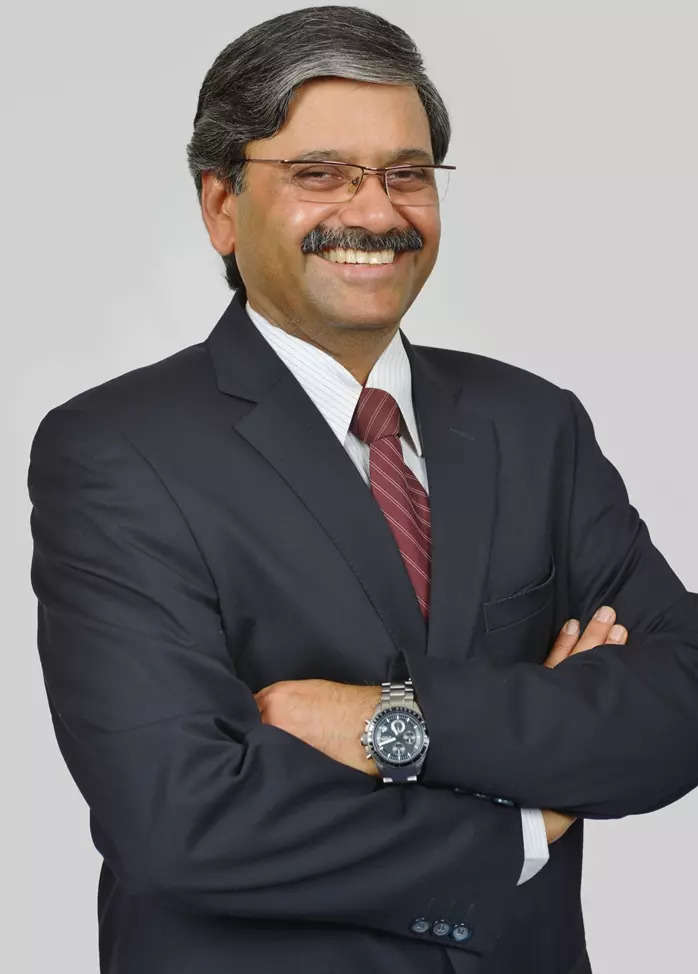
Q: How do you see the new normal mode of industry shaping up in the next 10 years from now?
Well, I’ve been in the industry for almost four decades. I am a dinosaur. But anyway, I think that what has happened in the last decade is going to be and has been a game changer. I believe that the next 10 years is going to be even more challenging, and filled with opportunities, and a lot of challenges. So from that perspective, I think it’s an exciting time to be in the auto industry now.
Firstly, from a customer perspective, customers are becoming more demanding, more aspirant, aspirational, and need all lots of features. He wants a car to be connected, he wants power performance. From a regulation perspective, and from the environment perspective, there is a lot of focus on sustainability. Moving forward, Net Zero is a step which you need to take in the next 5-10 years, which is going to shape the future. Therefore, I think technology is going to evolve over a period of time and we need to look at new mobility solutions, going forward, for the customer. So all in all, I think it’s going to be great in terms of opportunity, but also very challenging for all the people working in this together. I think with the suppliers and with many other stakeholders, we need to create and look at more innovative solutions.
Q: How does the roadmap look like for technology advancements in terms of the energy-mix and fuel options?
From a pattern perspective, there is one thing I’d like to say is that the IC Engine is going to look at improvement in the IC engine technology. To say, reduce the friction and improve fuel efficiency on the base level. We have seen and we have moved from the BCD to the CC because the KCS improved the fuel efficiency and we are going to push them further.
That’s number one. Number two is that electrification of the powertrain is going to be an important aspect. So, you’ll see smart hybrid technology or start-stop technology increasingly being used. The other thing which we are also working on is CNG. CNG is a big part of our portfolio, we have almost 300,000 Plus vehicles which we are doing, as far as CNG, we have more than 10 brands which are having CNG so, it improves the carbon footprint and it improves fuel efficiency by 25% from a co2 perspective. So, definitely, I think that’s one opportunity and something which is very important for India.
We believe India wants to work on the gas based upon the aspirin, therefore, we want to participate in that second alternate fuel which we are working on which is ethanol. As you are aware, it is going to start in some parts of India and will become 100% and without notifying all our vehicles are already compatible from a material perspective. We will also make it compliant, forward by 2025.
There is an opportunity because you are moving and it’s going to have its great fuel. Surplus grains can be converted to ethanol, which can improve the energy security for India. The opportunity further increases when we look at flex fuel examples in Brazil, if you say Brazil has flex fuel also having what almost 40%-50% blending of ethanol opportunity also exists in India and the government is working with the industry to look at flex fuel. To showcase the demonstration vehicle it will come into series production and warehousing. So, I think this is definitely on that roadmap, we also have CNG. But apart from that, the government is also looking at CBG (compressed biogas) in a big way. It’s carbon negative.
It would also help as it can be pushed into the CNG pipelines. And it can, you know, do the same duty as the CHP, and this is something which is available. And so we need to produce all of this and that infrastructure. And that needs to happen. Of course, you’re aware of that. We talked about electrification of the ISS. And the smart hybrid, strong hybrid is definitely what we have introduced in the Grand Vitara, 35%-40% improvement in fuel efficiency runs in every mode, for almost 40% the time in the city. And self-charging technology is definitely something which is very important for India. And lastly, the EV is in our portfolio. All of these are directions, which we believe are important for going towards that carbon neutrality or net zero. We need to work on all these technologies, because all of them have advantages.
All of them will be meeting the requirements for different persons and different segments for the customer.
Q: In the past two years, we have seen a lot of price hikes. How do you manage costs? What are things you have implemented in the past two years?
That’s always a challenge, because, we as a company, over the past four decades have always stressed on localization. We’ve developed the auto component industry, and we believe that localization of parts of our supply chain in moving the efficiency of that can reduce the costs. Also looking at the second level and third level of localization of suppliers, that also is, is a direction which we have called as Maruti Suzuki, all our engineers, and our suppliers also work on value engineering, value analysis, and on various aggregates.
We need to continuously reduce the cost, reduce the rate of parts, that’s the part and parcel of the way in which our thinking is and the way in which you have rationalization of platforms, rationalization of parts, colonization, but these are all things which we work on, which don’t impact the touch and feel as far as the customer is concerned. But internally, we tried to do that. All of this is an effort to reduce and contain the cost. The inputs are increasing, however, we need to see how much we can absorb, and reduce and improve our own efficiency. And of course, partly it is also going to the customer also, but that’s our optimization.
Q: Please tell us about the journey of the development of Fronx, and what kind of cost is involved to develop technology and localize engines?
The SUV segment is growing, and we want to participate in that in a big way. We did the full model change of the Brezza, we brought in the Grand Vitara. We have the XL6. So, we had three products, which are already there, but we also wanted to further increase and a compact SUV is where you know, volume is also there. Apart from Breeza we also wanted to have another sub four meter vehicle. So, what should be the sub four meter vehicle? The thing was that you know, there are types of body shapes which you have got. So, the Brezza is different from the Grand Vitara and so is the XL6.
We wanted to push the envelope as far as design is concerned and look at something different. So, the Fronx was with that thought that how can we look at a more aerodynamically shaped vehicle, something which is maybe a cab forward kind of a design, and has the inclination of the A pillar and rear glass in such a way is very different from our Brezza or from the Grand Vitara. So that was the thought which we had.
Second was how can we have the raised hood and the raised rear is something which is signifying a signal. So that is something which you wanted to do.
The third is from a design element perspective of the LED DRL or the multi reflector headlamps or the rear combination lamps. So these are the things which you know, from an exterior prospective customer is something which we look at and appreciate. And so, that’s what we did.
We had various iterations of design which we had to work on, in order to come to this shape compared to what we have seen today and make it a very distinct looking SUV. Ground clearance was raised in the platform. So it’s about 190 mm, we also had to do the spring rates and other things had to be done in such a way so that it gives a good confident stance as well as a good handling and right care. Comfort for the customer.
Q: You have a full hybrid vehicle now. Do you plan to introduce this technology to other products?
No, no plan at the moment, but definitely we believe in the strong hybrid technology and we are definitely going to look at other options where we can use that.
Q: Many carmakers have introduced ADAS technology. Is Maruti Suzuki planning to introduce this technology going forward?
Yeah, definitely I think we are looking at that technology. We also need to make sure that it has technology which we bring into the market that should be relevant for the Indian customer and for the Indian traffic. It should not give any false positives and we need to do a lot of testing. We need to see which part of the use cases we need to keep on and which we need to not have. So, that kind of technology is available with Suzuki and definitely we will be looking at some product in the future where that is going to get integrated into our products.
Learn more from him at ETAuto Tech Summit 2023















